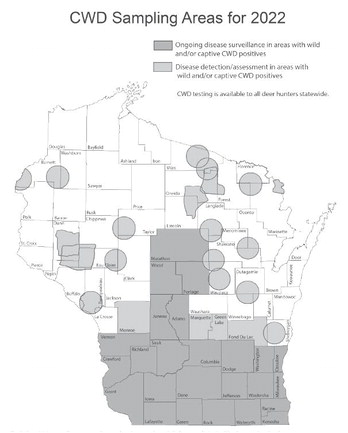DNR officials continue effort to monitor CWD prevalence


BY MATT FREY
THE STAR NEWS
The 2022 deer hunting season, unfortunately serves as the 20-year anniversary of the first detection ...


BY MATT FREY
THE STAR NEWS
The 2022 deer hunting season, unfortunately serves as the 20-year anniversary of the first detection ...